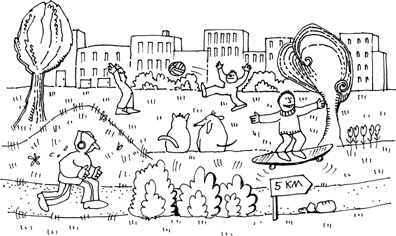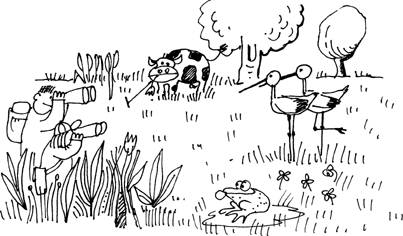Menu
Production
Greenways definition and goal
Central European Greenways definition
Greenways are multifunctional trails, developed in both urban and rural areas, for non-motorized users typically leading along linear green corridors, historic trade routes, rivers and railways. They are managed by local people in order to encourage sustainable development and healthy lifestyle. Greenways provide a framework for community-based initiatives and projects related to nature conservation, cultural heritage preservation, sustainable tourism and mobility. Greenways seek to address needs of locals and visitors and to provide a positive contribution to the local economy.(Sopron Declaration, Environmental Partnership for Sustainable Development,1st July 2006).

European Greenways definition
Greenways are communication routes reserved exclusively for non-motorised journeys, developed in an integrated manner which enhances both the environment and quality of life of the surrounding area. These routes should meet satisfactory standards of width, gradient and surface condition to ensure that they are both user-friendly and low-risk for users of all abilities. (Lille Declaration, European Greenways Association, 12th September 2000).

All Central European Greenways are implemented according to the following principles
- Supporting and mobilizing local communities – encouraging local enterprise, creating jobs and additional revenue streams, restoring and protecting traditional vocations;
- Natural and cultural heritage conservation and landscape protection;
- Using local resources – accommodation and food, tourist services, guides and local products;
- Cooperation between countries, regions, towns, villages and their inhabitants;
- Helping local communities discover and strengthen their cultural and social identity, improving conditions and quality of life;
- Providing information and opportunities for tourists to help them better understand the region, its challenges and local initiatives, activities, organizations;
- Promoting non-motorized transport and environmentally-friendly tourism, recreation and sport;
- Creating opportunities in urban areas for use of more sustainable forms of transport to help people move about on foot, by bicycle or by public transport instead of using their own car;
- Encouraging people to be mobile, to improve their health and safety when travelling and to undertake active forms of recreation.
Functions of Greenways
In principle, Greenways - natural and cultural heritage trails have four basic functions:
1. Sustainable transport and safety
Greenways promote non-motorized forms of transport and mass transit, encourage mobility and tourism related to walking, cycling, horse-riding, boating etc. Greenways contribute to increasing road safety and sustainable transport in urban and rural areas for many different user groups, including disabled, elderly and children.
2. Promoting healthy lifestyles
Greenways contribute to promoting healthy life-styles and improving the quality of life of local residents and visitors by encouraging active tourism, recreation and sports in the open air and in natural environments.
3. Development of eco-tourism and natural and cultural heritage conservation
Greenways contribute to the development of different types of environmentally-friendly tourism, including creation and promotion of environmental tourist products. All tourist products promoted along Greenways share the common principle of using local potential and supporting local communities – they are created with local resources: tourist services, cultural opportunities, local products and point of sale, as well as other community initiatives. Greenways serve to support grassroots and regional initiatives aimed at cultural, natural and landscape heritage conservation.
4. Supporting economic and social development of communities, including enterprise development
Greenways contribute to the development of local economies and encourage enterprise among local populations. Establishment of Greenways serves to initiate development of accommodation, food and guiding services. Trails promote establishment of galleries and points of sale for local products, tourism information services, sport and tourism equipment hire services etc.
Basic elements of a Greenway
1. Marking out the backbone trail
The main backbone trail links together landscape, natural, cultural and historical attractions. The trail should be served by small infrastructure – rest places, visually consistent information posters with maps and trail logo. Cycle trails should have hardened surfaces with low car traffic. Model greenway trails, which meet western European standards, are built as customized trails which are safe and separate users from car traffic.
2. Signposting a variety of local thematic loops and trails
Local trails and loops are linked to the main backbone trail of the Greenway. These are cycle, walking, horse-riding, water, cross-country skiing, horse-carriage paths and trails. They support recreation, interpretation of cultural and natural heritage and environmental education.
3. Tourism product consistent with sustainable tourism principles
Greenways are available as specialized tourism products both to individual tourists and to organized groups. An important part of any greenway product are tourist-related publications – maps and guides.
4. Partnerships in the region and Greenway coordination
Every Greenway is designed and implemented by a group of partners, comprising non-governmental organizations, local government and business. Partners sign a cooperation agreement, choose the main Greenway coordinator and also local coordinators (in the case of long distance trails).

5. Community initiatives aimed at natural and cultural heritage conservation
A Greenway provides a framework for community-based social projects, undertaken by passionate and creative people – leaders of local non-governmental organization, animators of local culture, artists, folk artists, children and youth, teachers, business people etc.
Network of GWs in Belarus






